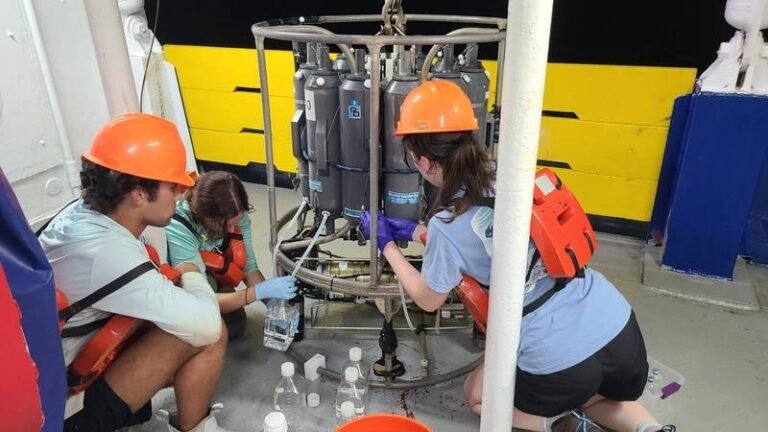NOAA Announces Findings from Gulf of Mexico Dead Zone Research
NOAA and its partners are set to reveal the results of a recent research cruise aimed at measuring the extent of the hypoxic or “dead zone” in the Gulf of America. The findings will be announced during a media teleconference on Thursday, Jul. 31, at 11 a.m. EDT, followed by a Q&A session for reporters.
In June, NOAA scientists issued a forecast for this summer’s dead zone, an area characterized by low to no oxygen levels that can have detrimental effects on fish and other marine life. This year’s forecast predicted the dead zone to cover approximately 5,574 square miles, larger than the historical 38-year average of 5,244 square miles but smaller than the record-setting 8,776 square-mile dead zone observed in 2017.
During the teleconference, speakers will delve into various factors influencing the size of this year’s dead zone, potential impacts on marine resources, the accuracy of the spring hypoxia forecast, and ongoing federal and state initiatives in the Mississippi River watershed aimed at reducing nutrient runoff into the Gulf.
Key speakers at the teleconference will include:
- Cassandra Glaspie, Associate Professor at Louisiana State University and Chief Scientist of the survey cruise
- Sean Corson, Director of NOAA’s National Centers for Coastal Ocean Science
- Gretchen Oelsner, Hydrologist at the U.S. Geological Survey, Water Mission Area
- TBD, Environmental Protection Agency
- Mike Naig, Secretary of Agriculture for the State of Iowa
For those interested in joining the teleconference, the meeting link is here. The meeting number for phone participants is 2870 697 8684.

